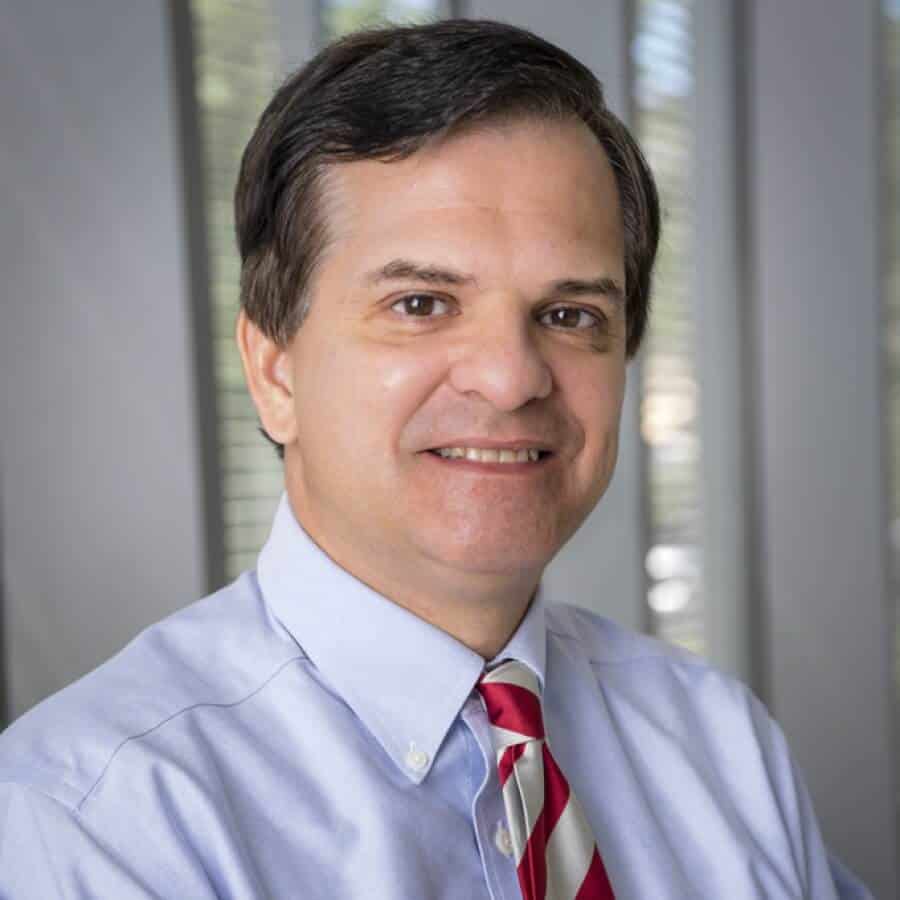All your projects sound like science fiction. In lay persons terms, so that our readers can understand, could you tell us about each of these projects and how they work?
ListenTree is a collaboration between a student in my group and a student in Prof. Joseph Paradiso’s group. It’s part of a larger PhD project by Edwina Portocarrero to understand how digital connectivity can be used to enhance communities. In this case, trees in parks are turned into speakers (using an acoustic transducer attached to the trunk) and can play music, poetry, sounds from other parts of the city, or any other sounds. The “magical” part is that there is no visible technology.
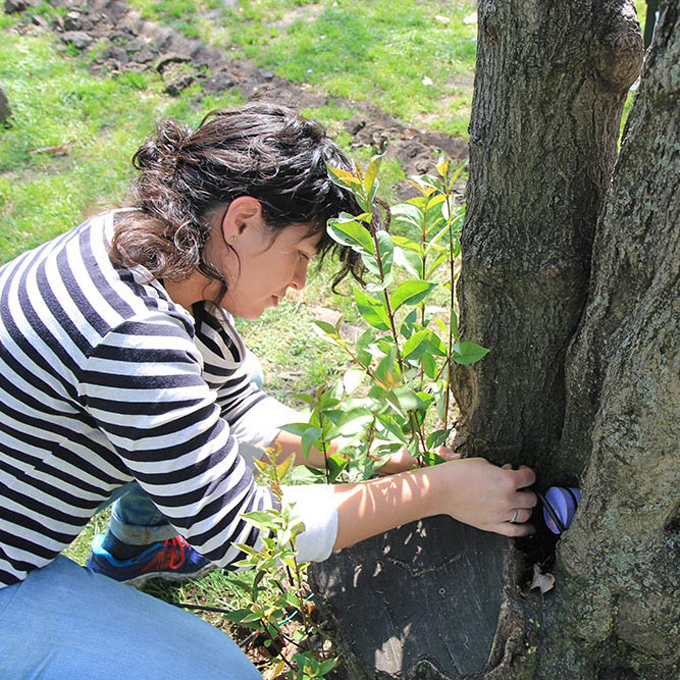
ListenTree being installed / photo: Edwina Portocarrero and Gershon Dublon
Increasingly there is a lot of important numerical information available about the world, and some of it can be understood only through visualizations. But most people don’t want to look at data visualizations on a computer. PhD student Laura Perovich has been working on ways to enable the public to visualize and understand environmental problems like the quality of water and air in their communities, without having any obvious technology involved. As part of this research she has been displaying information about the water in a river directly on the surface of the water, and she has been putting information about local air quality in patterns on people’s clothing.
The MIT Media Lab has been working on holographic images since the lab opened in 1985. Prof. Stephen Benton, who invented the kind of hologram that is used as a security image on credit cards and other products, was one of the founding faculty of the lab. More recently we have been trying to make electronic holograms, because a hologram makes the most realistic 3D images possible, and also is more geometrically accurate and comfortable than the kinds of devices used for applications like virtual reality. Here we’re talking about true holograms, not the projected images that are used in concerts and theaters. But the challenge is that to make a hologram we need to be able to make pixels much smaller than for a regular image, they have to be about the size of the wavelength of light (a half-micron or less). Some of the students in my research group have developed an electronic device that can actually make pixels of that size and we are now trying to make these devices in large enough sizes that they could be used for the things for which LCD screens are used now (like VR headsets, phones, computer monitors, etc. As part of that work we are developing a way to “print” the devices using a pulsed laser.
An even more advanced method of displaying information would be if we could get the data directly into the brain, bypassing the eyes entirely. Daniel Novy, a PhD student in the group, is building an array of electromagnetic coils that can be built into the back of a hat or the headrest of a vehicle, and can induce small electrical currents in the brain’s visual cortex – which is at the back of the head – which people perceive as bright spots in their visual field. The resolution of such a system is very low right now (the pixels are big) but we’d like to see how good we could make this technology.
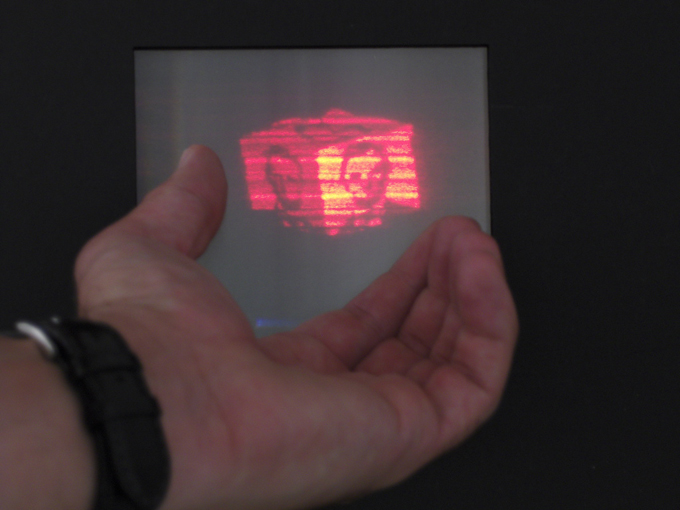
A photo of an earlier version of holographic video display
As goes with most of technology and the changes barreling ahead, could you tell our readers the time frame for each of the projects and how soon should they expect to watch television differently in the form of Holographic Display?
The real challenge for holographic displays is scaling them up to large sizes. So there might be a commercial wearable version for Augmented Reality in 3 years, and a phone-sized one in 5 years. A living-room or theater-sized screen will require more time and some new discoveries. And I can’t yet predict accurately when the resolution of the brain-stimulation display will be high enough to be really useful.
Our readers would like to know you as a person, could you tell us about yourself and what motivated you into your current field?
I was always interested in engineering, and studied it as an undergraduate student, but I wanted to work on things that were more interdisciplinary and more focused on real human concerns than what is usually done in engineering departments.
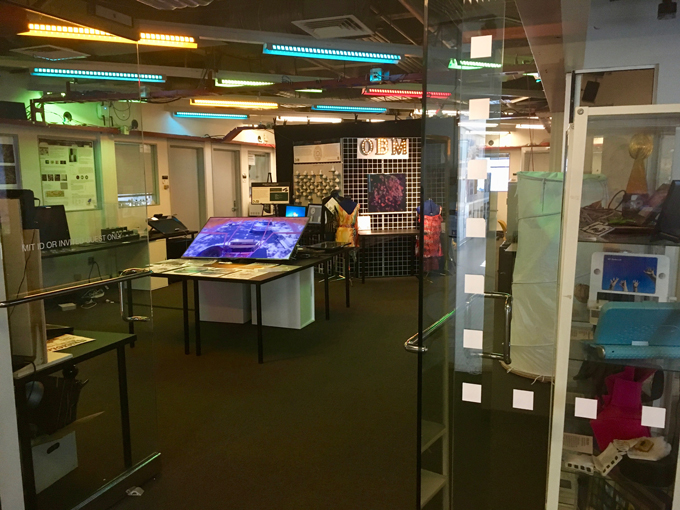
Laboratory space
Who have been the ones who inspired you during your growing up years?
I had many creative, clever, and hard-working family members, and I learned the value of finding something to work on that one really loves.
When I was a student at MIT I had the amazing opportunity to work with the faculty who were the founders of the Media Lab, and they gave me a perspective on how science and engineering can intersect with humanistic concerns.
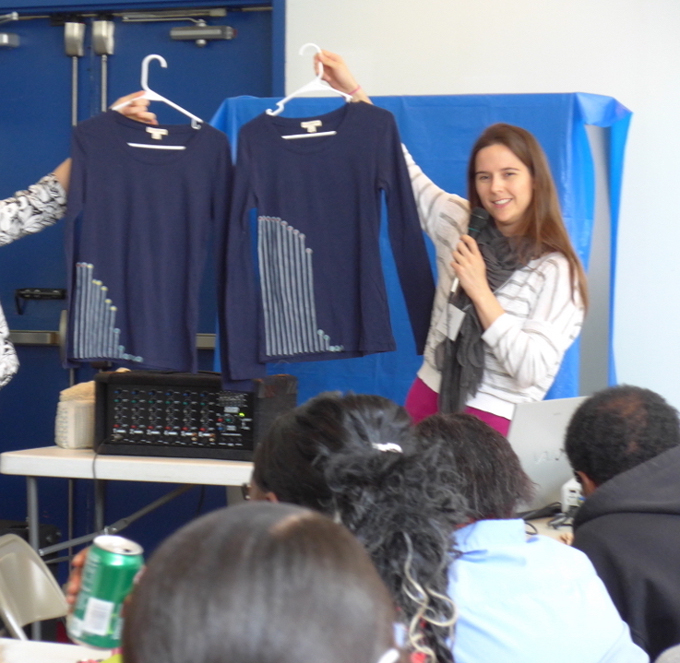
Dressed in Data / photo: Laura Perovich
Any word of advice for the youth, worldwide, of whom our readership mainly comprises and many of those look for role models.
When you’re taking classes, and later when you’re working, try to make sure you have at least one class every semester or one part of your job that really excites you.
Professor V. Michael Bove holds an SBEE, an MS in visual studies, and a PhD in media technology, all from MIT, where he is currently head of the Object-Based Media group at the Media Lab. He is the author or co-author of over 100 journal or conference papers on digital television systems, video processing hardware/software design, multimedia, scene modeling, user interfaces, visual display technologies, and optics. He holds patents on inventions relating to video recording, hardcopy, interactive television, user interface, and medical imaging, and has been a member of several professional and government committees.
Photos: From the Archive of Professor V. Michael Bove, Laura Perovich, Edwina Portocarrero and Gershon Dublon.
Support us!
All your donations will be used to pay the magazine’s journalists and to support the ongoing costs of maintaining the site.
Share this post
Interested in co-operating with us?
We are open to co-operation from writers and businesses alike. You can reach us on our email at cooperations@youthtimemag.com/magazine@youthtimemag.com and we will get back to you as quick as we can.
